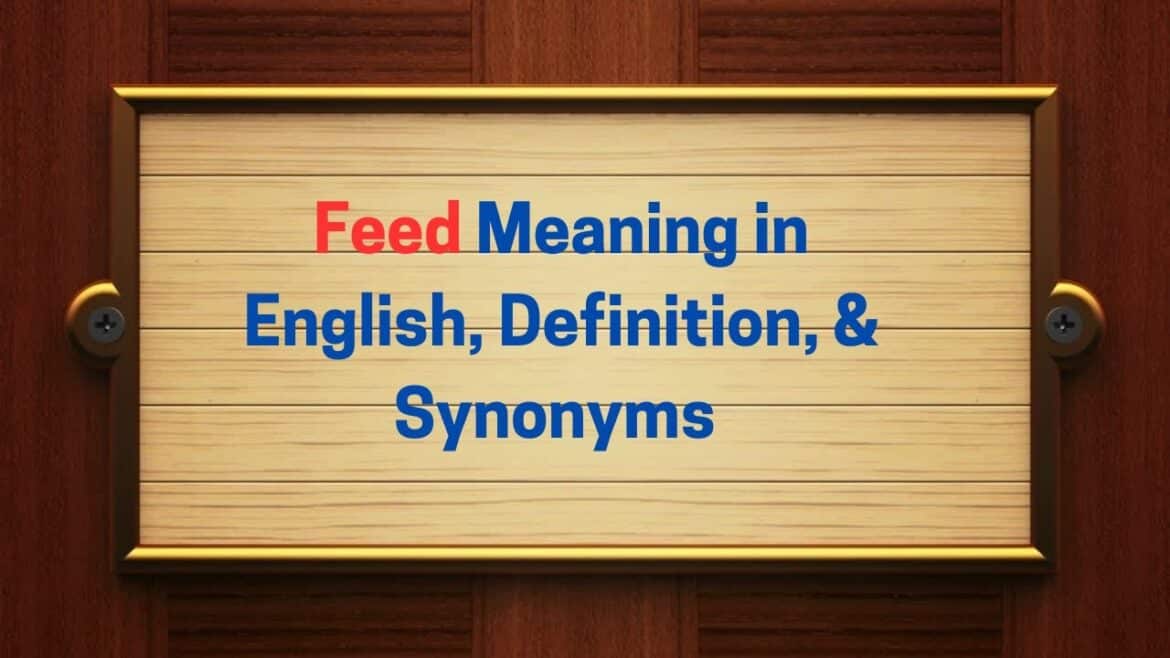This article explains the definition and meaning of feeds, how they work, and offers practical tips for using them.
The definition of feeds
A feed is a continuously updated data source that provides information in a structured format. This information is distributed via special standards such as RSS or Atom and allows users to consume content without having to visit each website individually.
- Feeds offer the advantage of delivering information in real time. This means that you can always stay up to date without having to actively search for new content. This timeliness makes feeds particularly valuable for news portals and blogs that regularly publish new posts.
- A key aspect is their structure. They are based on XML formatting, which allows data to be organized in a way that is easy for machines to read and process. This makes it easier to integrate feeds into various applications and platforms.
- For companies and content creators, feeds are an effective means of increasing reach. By distributing content via feeds, they can address their target audience directly and reach a larger readership, as subscribers are automatically notified of new content.
- Feeds also play a crucial role in search engine optimization (SEO). Fresh content is preferred by search engines, and providing up-to-date information via feeds can increase the visibility of a website.
How feeds work
To better understand how feeds work, it is worth taking a look at the most common technologies that enable them. Two of the best-known standards are RSS (Really Simple Syndication) and Atom. Both are used to format content in a structured way so that it can be easily interpreted by feed readers and other applications.
- RSS is a widely used standard that allows websites to provide content in a machine-readable format. This is achieved through XML, which allows for a structured representation of content that can be updated regularly.
- Atom is an alternative standard to RSS and offers some advanced features and a more detailed specification. It was developed to overcome some of the limitations of RSS and offers support for different content formats, for example.
- A feed reader is an essential tool for consuming feeds. These applications collect and organize feeds from various sources so that you can access all relevant updates in one place without having to visit each website separately.
- Feeds are often integrated into websites via scripts or plugins that automatically update and display the content. This enables dynamic presentation of content that is always up to date and offers added value to visitors.
This is the role feeds play in social media
Feeds are particularly important in social media. Platforms such as Facebook, X, and Instagram use feeds to display content to users in chronological or algorithmic order.
- Feeds are at the heart of the user experience on social networks. They provide a personalized overview of activities and content that are relevant to the individual user. This promotes interaction and loyalty to the platform.
- Algorithms decide which content is displayed in the feed. These algorithms take into account factors such as user behavior, preferences, and the relevance of the content to present a tailored selection.
- For companies, social media feeds are a powerful tool for marketing and communication. By strategically placing content in their followers’ feeds, they can increase brand awareness and encourage direct customer interaction.
- Feeds also contribute to the virality of content. When a post appears in many feeds and is shared, it can quickly achieve a wide reach. Therefore, optimizing content for social feeds is an important aspect of digital strategy.
Advantages and disadvantages of using feeds
Using feeds offers numerous advantages, but there are also some challenges and considerations that should be taken into account. From the complexity of technical implementation to the question of how content is best presented, there are many aspects that influence the effectiveness of feeds.
- A key advantage of feeds is the time they save. You can quickly access relevant information without having to visit multiple websites. This significantly increases the efficiency of information consumption.
- The main challenge in using feeds is ensuring that the content provided is up to date and accurate. Technical problems or incorrect updates can result in users receiving outdated or inaccurate information.
- Feeds can also be misused as a source of spam if they are flooded with irrelevant or unwanted content. It is therefore important to have clear guidelines for the creation and maintenance of feeds in order to preserve their integrity.
- Despite these challenges, the use of feeds remains an indispensable component of modern information systems. Their ability to efficiently deliver up-to-date content makes them a valuable tool for both individuals and businesses.

